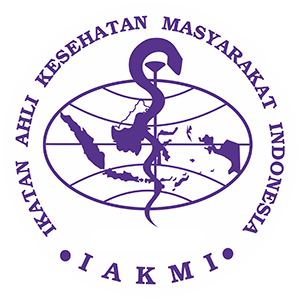Factors Related to Medication Adherence that Influence Quality of Life among People Living with HIV/AIDS in Surakarta
DOI:
https://doi.org/10.30787/gaster.v23i1.1874Keywords:
HIV/AIDS, Adherence, Quality of Life, antiretroviral therapy, WHOQOL-HIV BREFAbstract
Background: HIV/AIDS is a disease that can cause death and not only affects the physical well-being of an individual but also the overall quality of life, namely psychological, social, and spiritual for someone who is infected. One effort that can be given is to design support and care for PLWHA to improve the quality of life of PLWHA.
Purpose: The purpose of this article is to identify factors related to medication adherence that can affect the quality of life of PLWHA.
Method: This study is an observational study using a cross-sectional approach. A total of 64 respondents filled out a sociodemographic data questionnaire and WHOQOL-HIV BREF to measure quality of life. The relationship between quality of life and the sociodemographic characteristics of respondents was analyzed using the Kruskal-Wallis and Mann-Whitney U tests.
Result: Physical domain of QOL showed a maximum score of 15.41 and social relationship domain showed a minimum score of 14.86 among our study participants. Participants with higher socioeconomic status had shown better scores across all the domains of QOL (p < 0,005).
Conclusion: The QOL domain scores are high among males, unmarried, had employment status and had income less than or equal to Rp2.100.000, the distance from the respondent's house to the Health Center was mostly less than or equal to 10 km, did not have a family history of HIV/AIDS, did not have a history of other diseases and therapy treatments other than ARV and mostly experienced side effects.
References
Abbas, A.K., Lichtman, A.H and Pillai, S. 2015. Celluler and Molecular Eighth Edition. Elsevier, Saunders. Philadelphia.
Achappa, B., Madi, D., Bhaskaran, U., Ramapuram, J. T., Rao, S., & Mahalingam, S. Adherence to Antiretroviral Therapy Among People. North American Journal of Medical Sciences, 2013, Vol. 5, p.220-223.
Asrina, Hasan, Ernawati. (2023). Kualitas Hidup ODHA di Sukabumi. Joutnal Kesehatan. 34(2),1-7.
Deshmukh, Namita Navanit1,; Borkar, Avinash M.1; Deshmukh, Jyotsna S.2. Depression and its associated factors among people living with HIV/AIDS: Can it affect their quality of life?. Journal of Family Medicine and Primary Care 6(3):p 549-553, Jul–Sep 2017. | DOI: 10.4103/2249-4863.222016
Ernawati E, Nursalam N, Devy SR. The role of HIV/AIDS cadre on improving quality of life among women with HIV/AIDS in a com- munity setting: a qualitative study. Int J Psychosoc Rehabil 2020; 24: 870-879.
Jahro, U.U and Mulyana, D.S., 2023, Analisis Faktor Yang Mempengaruhi Kualitas Hidup Orang Dengan Hiv/Aids (Odha) Di Puskesmas Serang Kota. Jurnal Ilmiah Keperawatan, (Scientific Journal of Nursing), Edisi Khusus, Vol 9, No 3
Johnson MO, Neilands TB. Coping with HIV treatment side effects. AIDS Behav. 2008;11(4):575–85.
Kammerer J., et al., (2007) 'Adherence in Patients On Dialysis: Strategies for Succes' Nephrology Nursing Journal: Sept-Okt 2007, Vol 34, No.5, 479-485.
Kementrian Kesehatan Republik Indonesia. (2016). InfoDATIN Situasi Penyakit HIV AIDS di Indonesia (p. 8). Kementerian Kesehatan RI.
Kementrian Kesehatan Republik Indonesia. (2018). InfoDATIN Situasi Umum HIV/AIDS dan Tes HIV (p. 12). Kementerian Kesehatan RI.
Kemenkes RI. (2021). Laporan Perkembangan HIV AIDS dan Penyakit Infeksi Menular Seksual (PIMS) Triwulan I Tahun 2021. In Laporan Kemenkes RI (pp. 1–43). Kementerian Kesehatan Republik Indonesia.
Manalu, R.M. et al, 2019, Faktor-Faktor Yang Mempengaruhi Kejadian Infeksi Hiv Pada Usia Produktif Di Komite Aids Hkbp Balige, Indonesian Trust Health Journal, Volume 2, No.2
Mardia, Mardia, et al. "Dukungan Sosial dan Kualitas Hidup Orang dengan HIV/AIDS." Berita Kedokteran Masyarakat, vol. 33, no. 3, 2017, pp. 147-152, doi:10.22146/bkm.12563.
Martawinarti RTSN, Nursalam N, Wahyudi AS. Lived experience of people living with HIV/AIDS in undergoing antiretroviral the- rapy a qualitative study. J Ners 2020; 15: 157-163.
Muhammad, N.N., Shatri, H., & Djoerban, Z., 2017, Uji Kesahihan dan Keandalan Kuesioner World Health Organization Quality of Life-HIV Bref dalam Bahasa Indonesia untuk Mengukur Kualitas Hidup Pasien HIV/ AIDS, Jurnal Penyakit Dalam Indonesia, Vol. 4, No. 3
Okoli C, de los Rios P, Eremin A, Brough G, Young B, Short D. Relationship Between Polypharmacy and Quality of Life Among People in 24 Countries Living With HIV. Prev Chronic Dis 2020;17:190359. DOI: http://dx.doi.org/10.5888/pcd17.190359
Pasaribu, R. S., Asfriyati, & Andayani, L. S. (2019). Faktor- faktor yang berhubungan dengan kejadian HIV pada WPS (Wanita Pekerja Seks) di Klinik VCT (Voluntary Counseling and Testing) wilayah kerja Puskesmas Padang Bulan Kota Medan. Jurnal Mutiara Ners, 168- 177, 2(1), 168-177.
Pratiwi PI. Kepatuhan Penggunaan Obat Pada Pasien Lansia Dengan Penyakit Kronis (Studi Berdasarkan Adherence to Refills and Medication Scale pada Posyandu Lansia Karang Werda IV Kelurahan Airlangga Kecamatan Gubeng Surabaya). Universitas Airlangga; 2016.
Sismulyanto S, Supriyanto S, Nursalam N. Model to reduce HIV related stigma among Indonesian nurses. Int J Public Health Sci 2015; 4: 184.
World Health Organization. (2020). HIV/AIDS
Downloads
Published
How to Cite
Issue
Section
License
Copyright (c) 2025 Aprilia Puteri Santika, Hidayah Karuniawati

This work is licensed under a Creative Commons Attribution-ShareAlike 4.0 International License.













